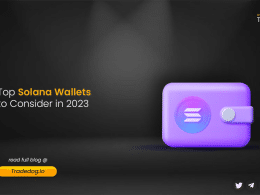Quick Links
The dynamic world of Bitcoin can be enticing, but for those hesitant about managing digital wallets and exchange ownership, Bitcoin Contracts for Difference (CFDs) offer an alternative approach to capitalize on its price movements. This guide empowers you to confidently navigate Bitcoin CFD trading, transforming you from an observer to an active participant.
Before diving into CFDs, let’s understand how they differ from traditional cryptocurrency exchanges. Traditional exchanges involve directly purchasing Bitcoin, making you the owner. You’ll need a secure digital wallet for storage, and managing the coins yourself. CFD trading, on the other hand, allows you to speculate on Bitcoin’s price movements without actual ownership. You enter a contract with a broker, agreeing to exchange the difference in price between when you open (buy) and close (sell) your CFD position. This opens doors to unique advantages:
- Leverage: Control a larger Bitcoin position than your initial investment, potentially multiplying profits (and losses).
- Short-selling: Profit even if Bitcoin’s price goes down by taking a “short” position
How They Work
Now, let’s unpack how Bitcoin CFDs function. A CFD is a financial contract between you and a broker. You agree to exchange the difference in price of the underlying asset (Bitcoin in this case) from the opening (buy) to the closing (sell) of your contract. Essentially, you’re betting on whether Bitcoin’s price will rise (go long) or fall (go short). If your prediction aligns with the market movement, you profit from the price difference. If not, you incur a loss. Remember, leverage magnifies both profits and potential losses in CFD trading.
Here’s a simplified breakdown of how Bitcoin CFDs function:
- You open a CFD contract with a broker, predicting whether Bitcoin’s price will rise (go long) or fall (go short).
- You don’t own any actual Bitcoin; you’re essentially betting on the price movement.
- If your prediction aligns with the market movement, you profit from the price difference. If not, you incur a loss.
Step-by-Step Guide
Trading Bitcoin CFD with a step-by-step approach
Step 1: Selecting a Reputable CFD Broker
Before diving in, it’s crucial to choose a well-established CFD broker offering Bitcoin CFDs. Conduct your research and consider factors like regulatory compliance, fees, platform usability, and customer support. Popular options include FOREX.com, IG, FP Markets, and eToro, but many reputable brokers offer Bitcoin CFDs.
Step 2: Opening Your Trading Account
Visit your chosen CFD broker’s website and follow their instructions for opening a live trading account. This typically involves providing personal information and completing a verification process.
Step 3: Funding Your Trading Account
You’ll also need to fund your account using a debit/credit card, bank transfer, or e-wallet. Deposit funds into your trading account using the methods available on your chosen broker’s platform.
Step 4: Market Analysis
Don’t underestimate the importance of market research before placing a trade. Consider technical analysis (chart patterns, indicators) and fundamental analysis (news events impacting Bitcoin) to understand current market trends. For instance, you discover a recent surge in demand for electric vehicles, potentially leading to increased Bitcoin adoption as a payment method. This might suggest a bullish trend, favoring a long position.
Step 5: Determining Your Position Size
Managing risk is paramount, especially for beginners. Start small with your initial trades, allocating only a small percentage of your capital per trade. This helps mitigate potential losses while you gain experience.
Step 6: Going Long or Short
Based on your market analysis, decide whether you believe Bitcoin’s price will increase (go long) or decrease (go short). If you anticipate a price rise due to positive news or market trends, you might choose to go long on Bitcoin CFDs. Conversely, if a downtrend is expected, a short position could be a suitable strategy.
Step 7: Placing Your Trade
Using your chosen CFD broker’s platform:
- Log in to your CFD broker’s platform.
- Search for “Bitcoin” (or BTC) and select the Bitcoin pair you want to trade (e.g., “Bitcoin (USD)”).
- You’ll typically see “BUY” and “SELL” buttons. Clicking “BUY” opens a long position, while “SELL” initiates a short position.
- In the “Amount” section, enter the number of CFD contracts you wish to purchase (considering the contract size).
- Review the pip value (profit or loss per price movement).
- Check the margin requirement (minimum amount needed to hold the position).
- Once you’ve reviewed the details, click “Place Trade” to execute your trade.
Step 8: Closing Your Trade
Close monitoring of your open positions and market movements is essential. When the price reaches your target and you want to lock in profits (or minimize losses), log back into your CFD broker’s platform. Navigate to your open positions and choose “Close” for the specific Bitcoin CFD trade. The closure ticket will display your current profit or loss. Click “Close Position” to finalize the trade.
Benefits of Trading Cryptocurrency Through CFDs
While CFDs share some similarities with traditional cryptocurrency exchanges, they offer several distinct advantages for traders:
- Enhanced Risk Management: CFDs provide a toolkit for managing risk. Stop-loss and take-profit orders help you lock in gains and minimize losses based on market movements. Advanced technical indicators can also inform your trading decisions.
- Leveraged Profits (and Losses): Margin trading allows you to control a larger Bitcoin position than your initial investment. This can amplify your profits (or losses) with smaller price movements.
- Greater Security: Most CFD brokers are regulated, offering an added layer of protection against fraud and malpractice compared to some unregulated cryptocurrency exchanges.
- Improved Liquidity: CFD markets generally boast higher liquidity than direct crypto trading. This translates to easier entry and exit from positions without significant price fluctuations due to low trade volume. Withdrawals are often faster and simpler as well.
- Swift Trade Execution: CFD transactions are typically executed within seconds, allowing you to capitalize on fleeting market opportunities.
A Comparison
| Feature | CFD Trading | Spot Trading | Futures Trading |
| Ownership of Asset | No | Yes, you own the underlying asset | No |
| Leverage | Yes, can magnify profits and losses | No leverage | Yes, can magnify profits and losses |
| Contract Size | Flexible contract sizes | Varies depending on the asset | Standardized contract sizes |
| Fees | Spreads, commissions (may vary by broker) | Transaction fees (may vary by broker) | Commissions, exchange fees |
| Regulation | Regulated by financial authorities | Regulated by financial authorities | Regulated by exchange authorities |
| Market Hours | Extended trading hours (may vary by broker) | Exchange trading hours | Exchange trading hours |
| Suitability | Beginners and experienced traders | Experienced traders, short-term strategies | Experienced traders, hedging strategies |









